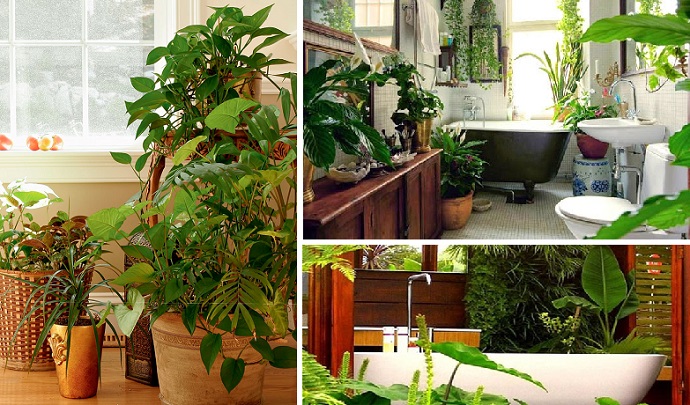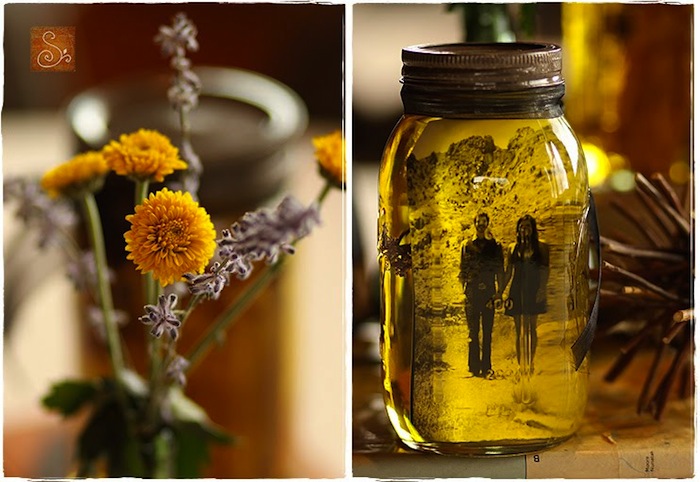Indoor plants can help clean the air and therefore help eliminate toxins, this is an ancient technique with the use of nature to maintain balance in homes and health.

Discover these 6 indoor plants that clean the air in your home and can help you stay away from daily toxins.
Do you have any plants in your house? In general, the quality of the air inside our house is much worse than it is outside. There are several steps you can take to improve the indoor air quality in your home. One way to do this is to have multiple indoor plants that clean the air and reduce toxins.
Benefits of indoor plants
Several years ago, NASA studied plants and their ability to purify the air indoors. They found that certain plants were better air cleaners and volatile organic compound (VOC) scavengers than others.
Why can indoor plants that clean the air help improve health?
Indoor plants are not only beneficial for increasing oxygen levels in our homes, they have also been found to reduce toxins in the air we are breathing.
The air in our homes has been shown to contain harmful toxins that eventually end up in our bodies. If the toxins are from building materials, paint, carpets, fumes, or dust, the levels of these toxins in the air can be reduced.
These plants can reduce many pollutants including: benzene, formaldehyde, and microbial pathogens.
How many plants should you have in your house?
According to NASA, it is advisable that you have about 15 to 18 of these plants in your home (specifically recommended for a house of approximately 1800 square feet). Remember to also place at least one plant in your room, or preferably more than one.
6 indoor plants that clean the air:
These plants are the most beneficial for improving indoor air quality. It is easy to find all these plants locally.
1. Aloe
Aloe plants are very beneficial for increasing oxygen levels in your home. They have also been found to absorb formaldehyde, carbon dioxide, and carbon monoxide. A pot with aloe vera is equivalent to nine biological air filters .
2. Spider plant (Chlorophytum Como sum)
Spider plants are capable of photosynthesis under minimal lighting. They help in the absorption of toxins in the air including formaldehyde, styrene, carbon monoxide and benzene. A spider plant is capable of effectively filtering a 200-square-foot room.
3. English ivy (Hedera Helix)
English ivy is another great houseplant that removes toxins. This plant has been shown to reduce 60% of toxins in the air and 58% of waste in the air after being placed in a room for just 6 hours.
4. Peace lily (Spathiphyllum ‘Mauna Loa’)
With a peace lily in your home, you can greatly reduce chemical toxins in the air. This plant filters out harmful formaldehyde, trichlorethylene, and benzene.
5. Snake plant (Sansevieria Trifasciata’Laurentii ‘)
This air-cleaning houseplant is nearly indestructible. If you are looking for an easy-to-care plant to start with, this would be a good option. The snake plant aids in the removal of toxins from the air and requires little or no lighting.
6. Rubber plant (Ficus Elastica)
Rubber plants or rubbery plants are excellent at removing toxins from the air, particularly formaldehyde. These plants require minimal lighting and are also easy to care for. Note: the leaves can be toxic, so be careful if you have animals in your home.
Do you want more variety?
NASA also mentions the following beneficial plants for improving indoor air quality in homes. These plants can be harder to find locally, but if you come across any of these plants, be sure to take one with you!
- Chinese evergreen (Aglaonema modestum).
- Red edged dracaena (Dracaena marginata).
- Bamboo Palm or Reed Palm (Chamaedorea sefritzii).
- Heart-leaf philodendron (Philodendron oxycardium, Syn. Philodendron cordatum).
- Weeping fig (Ficus benjamina).
- Golden pothos or devil’s ivy (Scindapsus aures or Epipremnum aureum).
- Dracaena corn plant (Dracaena fragrans Massangeana).
- Dracaena – Warneck (Dreacaena dermenisis Waneckii).
- Dracaena Janet Craig (Dracaena deremensis Janet Craig).
- Elephant ear philodendron (Philodendron domesticum).
- Philodendron Selloum (Philodendron bipinnatifidum, Syn. Philodendron selloum.
Other plants to grow indoors
The following species of indoor plants are also capable of changing the atmosphere of rooms. Some can even handle air conditioning.
Orchid
It is a champion in indoor use that requires little care. One of the most common species is the moth, whose rounded flowers range from white, pink, yellow, and purple. It works best in clay pots, as they are porous and drain water. They should be grown in partial shade, with indirect lighting. Pay attention to the color of the foliage: if it turns dark, move the orchid.
Fan Palm
Slow growing, it is ideal for growing in pots. But you have to put it in large and well-lit environments. Its large, pleated leaves and serrated margin, in a lovely bright shade of green, catch the eye of passersby. To keep it healthy, remove old dry leaves and fertilize during the summer. Protect it from strong winds and air conditioning.
Fern
Light green in color, it has long, drooping leaves, which tend to form bulky clumps, demonstrating its beautiful texture. To take advantage of these characteristics, put the plant in hanging pots or in a high place. The ideal lighting for growing is half shade, but you also like to get diffuse lighting. The wind is one of its greatest enemies, because it ends up burning the youngest leaves.
Cactus
This is a great option for those who don’t have the time or the way to care for plants. The cactus enjoys many hours of direct light and little water. The more sun your cactus receives, the more robust and beautiful it will be.
Chamaedorea elegans or parlor palm
This little palm tree is beautiful and a great option for decorating bright interiors, but with diffuse light. Direct sunlight can burn its leaves, which are long and shiny. Avoid growing it in a windy or air-conditioned environment. Yellowed leaves or dry tips show lack of moisture.
How to take care about inner plants?
You can take care of your indoor plants in a very easy way just by following some of these tips to the letter and learning that each plant has its own needs and its ability to adapt to the environment, so that they can grow and develop in a healthy way. you need to learn what their needs are.
To break the gray monotony of the big city, more and more households are joining the love of growing indoor plants. It is about breaking with the artificial and creating a healthier environment for our living spaces, changing the dull colors of cement for the green glow of nature.
But we cannot forget that our indoor plants are living beings and therefore have a series of needs, such as light, water, nutrients from the earth and a certain temperature that we must attend to, then we will teach how to maintain and care for indoor plants.
The importance of light
Light is an essential element for life on our planet and flora is no exception. Therefore, when we go to choose the place for our plant, the first thing we have to take into account is that it is sufficiently illuminated. Ideally, it is sunlight, but if it cannot be artificial lighting, it will also work for us.
Be careful with excess, if the light source is very strong and falls directly on the plant it can cause burns that affect its growth, at the same time that some leaves will appear yellowish and look bad. In contrast, a plant that does not have enough light will wither and die.
We must regularly move our indoor plants so that they receive the sun evenly. In summer we will move them away from the windows while in winter, when the solo is weaker, we will bring them closer. In general, they need about 15 hours of sun a day, so if we do not reach that amount, we will have to use some type of artificial light.
How to maintain and care for indoor plants?
These are some simple tips and tricks that can help us keep plants in optimal conditions, taking advantage of the natural conditions in which, we can adapt our space.
Temperature and humidity
When a plant lacks moisture it stops growing, its leaves turn yellow and fall off. Some species are adapted to very humid environments and therefore must be sprayed regularly to compensate for the loss of water in drier environments. We can also keep the pots with moist soil to refresh our plants or include a small plate with water under each pot.
As for the temperature, generally a plant will need an average for its development that varies between 12 degrees in winter and 24 in summer, without sudden changes that may alter its growth.
This will depend on where it is located. It is not advisable to place it near a heat source, such as the fireplace or in direct contact with the sun and inclement weather, such as on a balcony. We also have to be careful with the heating and air conditioning.
Irrigation and nutrients
The irrigation will depend on many factors, including the type of plant, its location and how high the temperature, since perspiration more and more water will be lost. In summer we have to take special care that our plant is very cool without getting waterlogged. When in doubt we must touch the earth with the fingertips, if it is wet then it is not necessary to water it.
As for the nutrients of the earth, it is the food of our plants since the natural resources end up being depleted. Therefore, the use of some type of compost is absolutely necessary to guarantee good health. The three most important elements that a plant needs are nitrogen (for growth), phosphorus (to facilitate new shoots) and potassium (to give it greater resistance).








